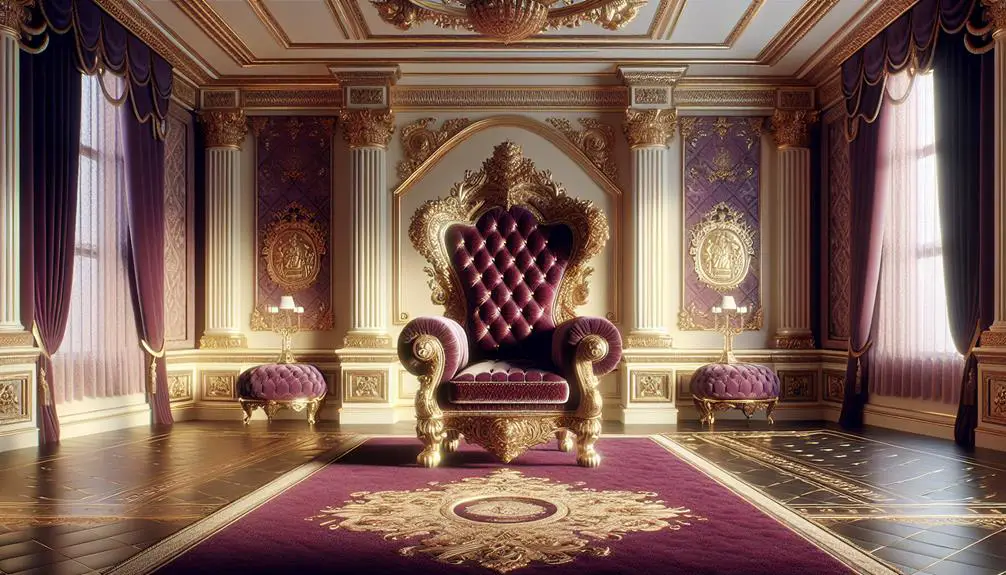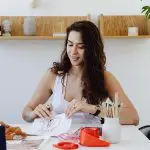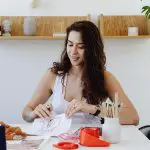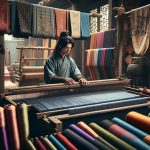I've always been fascinated by how velvet, with its rich texture and deep hues, conjures images of royal opulence and luxury. It's interesting to think that a fabric could hold so much historical weight and yet remain a modern day symbol of class and sophistication. Historically, velvet was not only a staple in royal attire but also a marker of high social status. Considering its origins and the intricate process required to produce it, it's no wonder velvet is often seen as the textile of kings and queens. But does it still hold that royal status today? Let's explore how velvet has evolved and what it represents in our contemporary society.
Table of Contents
Key Takeaways
- Velvet was a staple in royal wardrobes, symbolizing wealth and power for centuries.
- It was synonymous with nobility in European courts, enhancing its royal connotation.
- Historical use in religious ceremonies and royal attire in Asia underlines its regal significance.
- The fabric's luxurious texture and costly production historically restricted it to the elite.
- Celebrities and high-end brands continue to elevate its status, aligning it with modern royalty in fashion.
The Origins of Velvet
Velvet's journey began in the rich tapestry of Eastern civilizations, where artisans first mastered the complex art of weaving this luxurious fabric. Diving into the history, I've learned that the birth of velvet is credited to the skilled weavers of Kashmir and later flourished in the Persian and Egyptian cultures. These early velvet production techniques were incredibly intricate.
The production began with the creation of double cloth, which was meticulously split to reveal the plush pile now synonymous with velvet. This method demanded not only exceptional skill but also patience and precision, attributes that were finely honed by these early craftsmen. As I explored further, it became clear that the allure of velvet spread swiftly along the established trade routes.
Silk Road merchants played a pivotal role in transporting this fabric from the East to the opulent courts of Europe. The velvet trade routes carried the fabric as well as the secrets of its creation, influencing textile production across continents. This expansive trade set the stage for velvet's enduring prestige, transforming it from a regional specialty into a global symbol of luxury and status.
Velvet in Royal Attire
Now, let's talk about how velvet has been a staple in royal wardrobes.
Historically, it's draped kings and queens, signaling wealth and power.
Even today, you'll find modern royals incorporating velvet into their fashion for that touch of timeless elegance.
Historical Royal Garments
Adorning royals for centuries, velvet has been a staple in historical royal attire. Its lush texture and rich colors not only symbolized wealth but also played a key role in court etiquette. At coronations and state banquets, the choice of velvet conveyed power and ceremonial significance. I've observed that each color and pattern had its own meaning, deeply embedded in the fabric of monarchical tradition.
For instance, purple velvet, often reserved for the highest echelons of royalty, underscored their almost divine status in society. This fabric's role in historical costumes wasn't just about aesthetics; it was a deliberate choice to communicate status, power, and lineage. Velvet's enduring presence in royal wardrobes tells a story of tradition and prestige that few other materials can claim.
Modern Monarchical Fashion
How has velvet maintained its prestigious role in modern royal fashion? Despite the evolution of trends, this fabric remains a staple in the wardrobes of the world's monarchies. Here's why:
- Versatility: Velvet adapts well, from winter coats to summer evening gowns.
- Luxury Appeal: Its rich texture screams luxury, perfectly aligning with the royal brand.
- Ceremonial Styles: It's the go-to fabric for many high-profile royal ceremonies.
- Historic Continuity: Velvet bridges traditional and contemporary royal fashion seamlessly.
Velvet isn't just a fabric; it's a symbol of status and continuity in royal textiles. It connects generations and showcases the unspoken power and elegance expected in monarchical circles. Every thread weaves deeper into the fabric of royal identity.
The Fabrication Process
Velvet's creation process begins by selecting the finest fibers to guarantee a luxurious feel and appearance. It's not just about picking any material; I thoroughly investigate to choose the most durable and high-quality fibers available. This guarantees both the lush texture that velvet is famous for and the longevity that makes it a worthwhile investment.
Once I've the right fibers, I move on to the weaving techniques, which are vital in velvet production. Traditional weaving involves a unique method where two thicknesses are woven simultaneously, and then cut apart to create the pile effect that velvet is known for. This technique not only demands precision but also a deep understanding of the tension and coordination needed to achieve the perfect pile density and height.
Ensuring material durability during this process is essential. I focus on tightly weaving the fibers to withstand wear and tear, maintaining their elegant look over time. It's a meticulous process, where every step, from fiber selection to the final weaving, contributes to the overall quality and durability of the velvet. This attention to detail is what can truly elevate velvet from merely a fabric to a symbol of luxury and royalty.
Cultural Significance Worldwide
While the meticulous crafting of velvet underlines its luxuriousness, its role in cultures around the globe truly showcases its regal status. I've seen firsthand how velvet isn't just a fabric; it's a symbol steeped in tradition and luxury. Across diverse societies, velvet symbolism plays a pivotal role in conveying status and spiritual significance.
Here's a quick exploration into how velvet holds sway in global rituals and cultural expressions:
- In European courts: Velvet was synonymous with nobility, often used in royal garments and coronation robes to signify high status.
- During religious ceremonies in Asia: Particularly in countries like India, velvet is adorned with intricate embroidery to create garments and accessories used in spiritual rituals.
- In Middle Eastern fashion: Velvet is a popular choice for festive wear, reflecting wealth and refinement.
- Among indigenous tribes in the Americas: Certain tribes use velvet in traditional attire for significant ceremonies, symbolizing resilience and continuity.
This fabric's rich texture and deep colors resonate with cultural narratives worldwide, making it more than just material but a carrier of heritage and prestige. Whether it's part of a ceremonial robe or a simple accessory, velvet consistently commands respect and admiration.
Velvet's Evolution Over Time
I've noticed that over the centuries, velvet has transformed from a symbol of power and wealth to a versatile staple in both high fashion and everyday wear. Initially, velvet production techniques were closely guarded secrets, held by a few skilled craftsmen in places like Italy and the Ottoman Empire. These artisans treated velvet creation as a form of high art, making it synonymous with luxury and exclusivity.
As time marched on, technological advancements democratized velvet production, allowing it to be more accessible. Yet, it never lost its artistic expressions. Designers have continuously experimented with colors, patterns, and the blend of different materials, keeping velvet's luxurious legacy alive while adapting it to contemporary tastes.
To really feel the emotional journey of velvet, consider the table below:
| Era | Emotion | Reason |
|---|---|---|
| Middle Ages | Awe & Desire | Rare, symbol of power |
| Renaissance | Envy & Admiration | Worn by the elite, epitome of fashion |
| Industrial | Curiosity & Accessibility | Mass production begins |
| Modern Times | Nostalgia & Innovation | Melds tradition with modernity |
Velvet's evolution is not just about fashion; it's about the blend of tradition and innovation, keeping the majestic aura alive while becoming an everyday luxury.
Modern Uses in Fashion
Now, let's explore how velvet is shaping current fashion trends. Traditionally linked with opulence, velvet's making a seriously versatile comeback, infiltrating everyday and high-end fashion alike. I've seen this fabric shift smoothly from the runway to the streets, and it's thrilling to witness its evolution with modern twists.
The integration of velvet technology has particularly piqued my interest. Designers are crafting lightweight, durable velvet fabrics that maintain the classic texture but offer new practicality. This innovation means velvet isn't just for posh parties anymore; it's appearing in unexpected places, like sportswear.
Yes, you heard right—velvet sportswear is becoming a thing! Imagine hitting the gym or jogging in a velvety tracksuit that combines style with comfort. It's a bold move away from traditional sportswear materials, and it's gaining traction.
Here's a quick glimpse at velvet's role in contemporary fashion:
- Luxury activewear: Velvet sportswear that looks good and performs well.
- Evening wear: Velvet gowns and suits that dominate red carpets.
- Casual streetwear: Incorporating velvet in daily outfits for a touch of luxury.
- Tech-inspired fabrics: Innovations in velvet technology enhancing flexibility and durability.
Velvet is proving it's not just a relic of the past—it's a dynamic player in the future of fashion.
Velvet in Home Decor
When I think about velvet in home decor, I can't help but focus on how its textures really boost the room's ambiance.
It's not just about the feel; the colors of velvet tend to have a big impact too. They can transform a dull space into something that feels regal and vibrant.
Velvet Textures Enhance Ambiance
Velvet instantly elevates any room's ambiance with its luxurious texture and depth. Its role in textural psychology can't be understated; it transforms a space, influencing our mood and perception through tactile engagement. Ambient lighting interacts dynamically with velvet, highlighting its rich depth and creating an inviting, warm atmosphere.
To add depth and hook you further, consider these aspects of velvet in home decor:
- Plush Comfort: Velvet sofas and cushions offer unmatched comfort, inviting relaxation and social interaction.
- Acoustic Benefits: Thick velvet curtains can subtly dampen sound, perfect for creating a quieter, serene environment.
- Visual Depth: The fabric's pile direction plays with light, giving a room movement and life.
- Luxury Aesthetic: Few materials scream luxury like velvet, ideal for an upscale look.
Color Impact With Velvet
Choosing the right color of velvet can transform the energy and mood of any room. Velvet psychology isn't just a fancy term; it's real! Different hues evoke unique sensory experiences and emotional responses. Deep blues and rich greens create a serene, luxurious atmosphere, perfect for a cozy reading nook or an elegant living room. Meanwhile, vibrant reds or soft pinks add a touch of warmth and excitement, ideal for energizing a space.
When I'm advising on home decor, I always emphasize the importance of considering how velvet's lush texture and color will interact with lighting and other elements in the room. It's not just about aesthetics; it's about creating an environment that feels right.
Accessibility and Affordability
Despite its luxurious appeal, velvet's price and availability can vary greatly, making it more or less accessible depending on where you shop. The production costs of velvet aren't uniform; they differ based on the type and quality. This impacts consumer perception to a large extent. When I'm out hunting for the perfect velvet piece, I've noticed a few factors that influence its affordability:
- Type of Velvet: Synthetic velvets are typically less expensive than their natural counterparts like silk or cotton velvet.
- Source of Fabric: Imported velvet tends to be pricier due to shipping and handling costs.
- Brand Prestige: High-end brands often mark up their prices based on their market position.
- Seasonal Demands: Prices can spike around certain times of the year when velvet becomes a trendy choice.
As someone who aims to master the nuances of fabric shopping, understanding these elements helps me make informed choices. Velvet can be both a luxury and a reachable option. Whether you're splurging on a designer gown or picking up a budget-friendly throw pillow, the key is to know what drives the price and availability. This knowledge empowers you to make decisions that align with both your aesthetic desires and your budget constraints.
Celebrity Influence on Velvet
While exploring the world of fashion, I've noticed that celebrities often play a pivotal role in popularizing velvet by showcasing it on red carpets and social media platforms. Their influence isn't subtle; it's massive and transformative. When a star steps out in a lush velvet gown or a sharp velvet suit, it sends ripples through the fashion community and beyond. This visibility is vital because it places velvet right in the spotlight, making it a topic of discussion and a sought-after material for the season.
Celebrity endorsements of velvet don't just stop at appearances. They extend to collaborations and collections, further cementing velvet's place in both high fashion and everyday wear. For instance, when a well-known figure collaborates with a major fashion brand to release a velvet-centric line, it typically garners significant media coverage and consumer interest. This phenomenon amplifies the fabric's prestige and desirability.
Moreover, red carpet trends have a way of dictating what's hot and what's not. As velvet continues to make regular appearances at major award shows and galas, it reaffirms its status as a luxurious yet versatile fabric. These celebrity-driven moments aren't just about fashion; they're powerful endorsements that shape how we perceive and consume trends.
Future Trends in Velvet Use
Looking ahead, velvet's adaptability suggests it'll continue shaping future fashion trends. The evolution of velvet technology and the rising demand for sustainable velvet are particularly exciting. These innovations not only promise to keep velvet in the limelight but also guarantee it contributes positively to our environment.
Here's what's coming up:
- Technological Enhancements in Fabric Production: Advances in textile technology mean we can now produce velvet that's both luxurious and durable without the traditional environmental toll.
- Eco-friendly Velvet Options: The development of sustainable velvet using recycled materials and eco-friendly dyes is set to revolutionize the industry.
- Expanded Use in Home Decor: Beyond fashion, velvet is making a comeback in home decor, with innovations that make it more resistant to wear and easier to care for.
- Integration with Smart Technology: Imagine velvet that changes color or pattern with the tap of a smartphone. This isn't far off, thanks to ongoing research into smart textiles.
As a fabric aficionado, I'm thrilled to see how these trends will unfold. Velvet's rich texture and deep colors have always captured hearts, and with these forward-thinking approaches, its future is as bright and luxurious as its past.
Frequently Asked Questions
How Do You Properly Clean and Maintain Velvet Fabric?
I gently brush velvet to maintain its cleanliness and prevent deep stains. For storage, I hang it or lay it flat to prevent creases. Prompt action on spills guarantees easy stain removal.
Are There Eco-Friendly Alternatives to Traditional Velvet?
Yes, there are eco-friendly alternatives to traditional velvet. I've explored options like bamboo velvet and recycled polyester which both prioritize sustainable sourcing in their production processes, reducing the environmental impact of velvet production.
Can Velvet Cause Allergies or Skin Irritations?
Yes, velvet can cause allergies or skin irritations for some people. It's not a common allergy trigger, but it can be an irritation source, especially if you've got sensitive skin. Always check the material blend!
Is Velvet Suitable for Summer Clothing?
I wouldn't recommend velvet for summer clothing due to its low breathability. It's better suited for cooler weather, despite its luxurious feel and appeal in summer styling. Stick to lighter fabrics!
How Does Velvet React to Different Weather Conditions?
I've noticed velvet's durability varies with weather; it absorbs moisture, which can weigh it down. In dry conditions, however, it holds up well, retaining its luxurious texture and rich appearance.
- What Is Pochampally Ikat? a Journey to India’s Silk City - June 27, 2025
- What Is Pochampally Ikat? a Journey to India’s Silk City - June 27, 2025
- What Is Pochampally Ikat? a Journey to India’s Silk City - June 27, 2025






